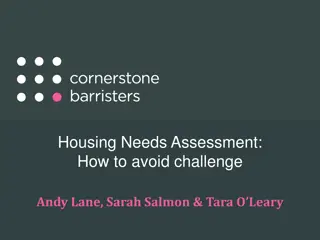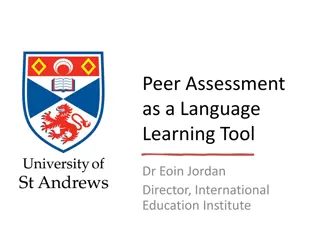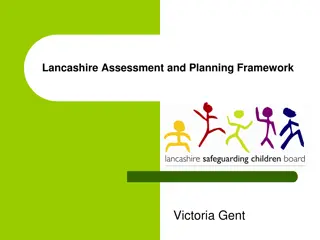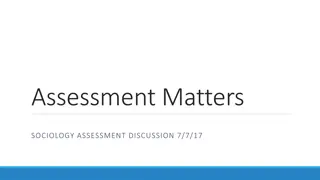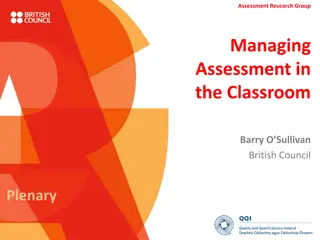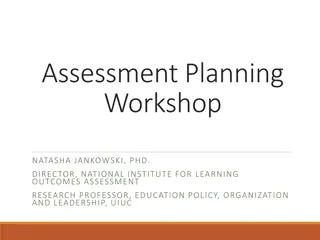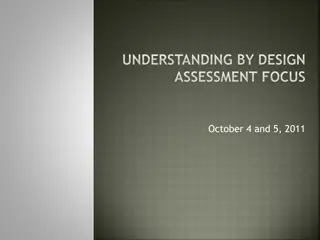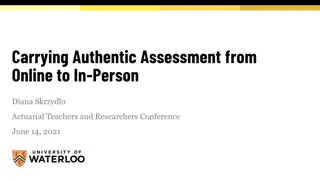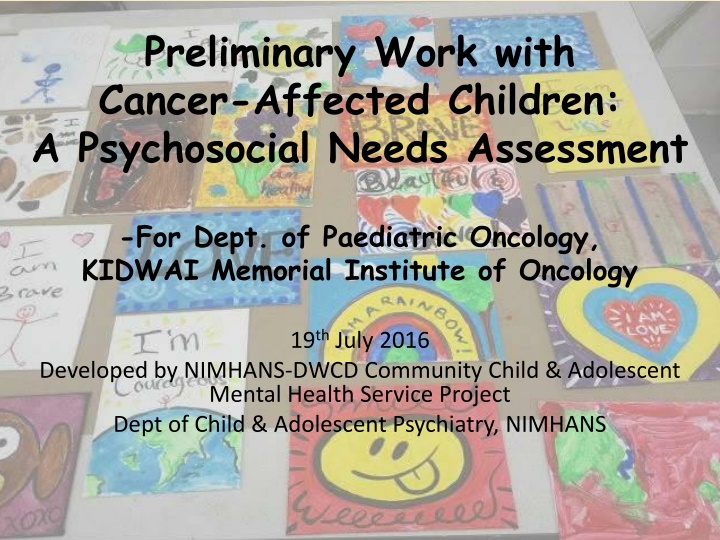
Psychosocial Needs of Children with Cancer: Project Insights
This project focuses on conducting a psychosocial needs assessment for children affected by cancer, highlighting the implications of chronic illness on their mental health. It aims to integrate mental health interventions into existing treatment protocols, provide support services, and explore treating teams' perspectives on mental health issues in pediatric oncology.
Download Presentation

Please find below an Image/Link to download the presentation.
The content on the website is provided AS IS for your information and personal use only. It may not be sold, licensed, or shared on other websites without obtaining consent from the author. If you encounter any issues during the download, it is possible that the publisher has removed the file from their server.
You are allowed to download the files provided on this website for personal or commercial use, subject to the condition that they are used lawfully. All files are the property of their respective owners.
The content on the website is provided AS IS for your information and personal use only. It may not be sold, licensed, or shared on other websites without obtaining consent from the author.
E N D
Presentation Transcript
Preliminary Work with Cancer-Affected Children: A Psychosocial Needs Assessment -For Dept. of Paediatric Oncology, KIDWAI Memorial Institute of Oncology 19thJuly 2016 Developed by NIMHANS-DWCD Community Child & Adolescent Mental Health Service Project Dept of Child & Adolescent Psychiatry, NIMHANS
Psychosocial Implications of Chronic Illness in Children Chronic illness a health problem that lasts three months or more, affects a child s normal activities, and requires frequent hospitalizations, home health care, and/or extensive medical care. Diseases that were once fatal are now successfully treated and children survive at much higher rates than 20 to 30 years ago. Illnesses and treatment are source of high (chronic) stress to children and their parents Children with chronic illness have increased risk of developmental, behavioral and emotional issues (and can compromise adherence to treatment regimens). Many pediatric illnesses are exacerbated by stress encountered in other aspects of children s lives. Therefore essential to understand the ways that children and adolescents cope with stress , the processes of adaptation to illness and to develop effective interventions to enhance coping and adjustment.
Objectives of Project Interventions in Kidwai Memorial Hospital To obtain a clear understanding of children s issues as well as the scope and feasibility of integrating mental health issues into the existing (cancer) treatment protocols screening processes. Based on this initial scoping, to design mental health and psychosocial interventions and services for the children. To provide mental health individual and group interventions to children affected by chronic illness. through mental health services, through
Treating Teams Views on Mental Health Issues in Children with Cancer There is a need for for psychosocial assistance and because they have neither the time nor the skills, are perhaps unable to discern what children s psychosocial issues really are. We tend to be very busy and pre- occupied with the treatment of the medical conditions as most children seeking treatment are already at critical stages of the illness. Have not observed any major mental health issues in the children we treat... The only mental health-related protocol is for children above 5 years to be assessed for cognitive development before and after they undergo cranial radio-therapy. No particular protocols are followed for disclosure to children about illness... Since the children reside in a large ward, wherein all of them have the disease, and most of them know that they have the disease and are even aware of the treatment protocols for example, they know about bone marrow procedures, IT etc . Most children are very sharp and intelligent (since they know about the disease) and are usually happy
What the Psychologist Shared... ...mostly deal with children having leukaemia because it has a better prognosis (good survival rate) than other cancers provides a psychoeducation package for parents. ...see children after the first course of treatment (1.5 months after the treatment is underway) as children and families are busy with treatment procedures . Adolescent issues...oppositional defiant disorder (mainly relating to medication adherence). Common mental health problems seen in children are bedwetting and temper tantrums. Not much is known about children s reactions to mortality... No specific illness disclosure protocol is followed; younger children may know that they have something called cancer but do not know the details ; Adolescents know so any additional questions they have are answered using psychological counselling sessions.
NGO/Samikshas Work Visits the children s ward thrice a week to provide educational and recreational inputs to the children. The staff report that they are not aware of any emotional or behaviour problems in children.
Development of Screening Proformas 1. Children aged 7 to 15 years: a) administered to children, to understand their emotional experiences, their insight into their behavioural issues, knowledge and concerns about illness. b) administered to parents/caregivers (mainly mothers) to understand their observations of their children s emotional and behaviour problems, concerns about illness and disclosure. 2. Children aged 0 to 6 years - administered to parents/caregivers (mainly mothers) to assess young children for developmental delays and disabilities in the 5 domains of child development (physical, speech & language, social, emotional and cognitive development).
Overview of Emotional and Behavioural Issues in Children with Cancer
Basis of Emotional Problems in Children emotional problems, which were a major proportion of psychosocial problems expressed by children 39% of children had anxieties relating in the family context:
Basis of Emotional Problems in Children : Family Context Reasons for Emotional Problems (Anxiety/Adjustment/ Dysphoria/ Depression) Children s Report Parent s report Psychosocial Context % N=101 % N=100 Concerns back home about going 9% 18% As Caregivers Worries and Upsets a Response to Illness related 10% 10% Family Separation from Family 14% 19% Loss and grief 3% 3% Other Parental Marital Conflict 2% 2%
Family Context (i): Concerns about Going Home Children forced to be away from the comfort and familiarity of home and home routines, and separated from loved ones. Normal for children to feel anxious about change in place and routine and about separation from family; but this is compounded by a hospital environment. a routine that is characterized by not only uncertainty and unpredictably but by various (painful) treatment procedures, anxiety and adjustment issues in children, particularly in the initial duration of their stay. Later on, many children gradually grow used to the new/ hospital environment...so that these anxiety and distress symptoms may be less evident. However, the larger anxiety about when am I going home tends to be a pervasive one, lasting the entire duration of the hospital stay.
Family Context (ii): Separation from Family All children feel some degree of separation anxiety in early childhood/ during a child s pre-school years, and this is normal at this developmental stage. As the child grows older (post age 6 to 7 years of age), such separation anxiety becomes a mental health problem which usually occurs in specific contexts of trauma such as child sexual abuse, domestic violence, parental marital conflicts or chronic illness. Children with chronic illness vulnerable to separation anxiety because: they tend to spend more time with primary caregivers than the average child of the same age They have an increased dependency on their caregivers -- caregivers respond to children s illness needs. less independent and more reliant on their caregivers for various needs
2 types of separation issues observed in Kidwai Ward: (temporary) separation from the primary caregiver even for short durations i.e. more akin to separation anxiety; experienced more as anxiety. separation from other family members (some of whom may also be attachment figures such as fathers/ grandparents); experienced more as a sense of loss. Younger children experienced both types of separation issues (anxiety and loss), Most older children s concern--separation from loved ones at home missing home and family and sadness about being away from fathers and other loved family members.
Family Context (iii): As a Response to Caregivers Worries and Upsets when there are worries and tensions in a family, felt or projected by adults, whether due to illness or death of a family member or marital problems or financial stress, children also reflect the worries of adults and caregivers; In chronic illness context--compounds children s existing worries and concerns about their own health. Young children also feel upset/ fearful--even if they do not comprehend completely what the problem is. Frequent crying, thumb-sucking, nail biting, inattention, complaints about body aches and pains (that have no medical basis), and oppositional defiant behaviours are some anxiety-related behaviours that children develop in response to caregiver worries/tense family environments
Family Context (iv): Loss & Grief A child who has lost an attachment figure and a primary caregiver is already vulnerable to emotional issues A child who has to contend with loss of a caregiver along with the experience of illness therefore is more vulnerable to anxiety and adjustment issues. Anxiety and feelings of vulnerability created by illness triggers the sense of loss (even if it has been some years since the loss event occurred) and get children to return to ruminating about the loss experience; Recent loss experiences-- compound the anxiety and worries brought on by the illness adding to the emotional and psychosocial vulnerability. Illness experience also a loss experience loss of school days, play, friends and many other childhood experiences that normal, well children would have. Children with chronic illness/cancer need greater financial, systemic and psychosocial support than others...loss of parents affects this/ increases anxiety.
Family Context (v): Parental Marital Conflict Children with chronic illness already have many anxieties about their illness. Other stressors such as marital and family conflicts only exacerbate the (illness) worries and upsets.
Basis of Emotional Problems in Children : School Context
School Context (i): Poor School Attendance and Going back to School Adverse impact children s school attendance. children, not able to be to do the things that other children do (e.g. going to school, physical activity and games) have to take medicines, visit the hospital frequently, limit physical activities and games... creates a sense of otherness, and children feel very conscious that they are different from their peers. Worry about what to tell everyone Will I be treated differently by their friends and teachers because I missed so many days of school or due to their illness? What will they ask about my treatment/illness? And what to tell them? I haven t written my 7th final exam as I was in hospital. Now I have to study 7thstd again, all my friends will be in 8th std.
Detention in the same class create fears in children that they will be treated differently/ made fun of by other children; some are upset that all their friends will be in a higher class. Parents sometimes instruct children to not disclose about their illness to others outside the family/peers/teachers (stigma and discrimination worries). Missing school for weeks and months makes it difficult to catch up upon return to school... difficulty with academics an added stressor.
School Context (ii): Academic difficulty in children Before and After illness Learning problems in children have many underlying causes: specific learning disabilities/ intellectual disabilities/ ADHD/emotional & behaviour problems/ under-stimulation. Children with learning difficulties and chronic illness have increased risk of learning problems and poor academic performance because of under stimulation and lack of opportunities for learning in the hospital setting. Long absences from the school create under-stimulation and lack of opportunities/ exposure to learning either creating learning difficulties or exacerbating existing learning disabilities. Higher risk of anxiety disorders such as school refusal and psychosomatic disorders
Concerns about Illness Children s concerns : The treatment and the pain caused due to it. When will the treatment finish? Will it pain too much? Has the treatment procedure been successful? What kind of illness I have? Is it dangerous? Parents reported: He was a very happy child, always making jokes and talking to everyone. But now he is always worried and sad. She frequently asks me whether she will ever be cured of this disease. Even before 2 days of her Bone marrow treatment, she starts crying. She will be very anxious and worried before her investigation reports come. She is always worried and keeps on asking question about her illness to all the doctors who come in. He often say- why did this happen to me? And starts crying.
Children often afraid and tense even before the treatment is done (i.e. 1 day prior to the treatment): about the pain + outcomes of treatment worried about the outcome of bone marrow procedure...if the test result is not good, children will not be able to move to the next phase of their treatment. Hence, children are anxious and worried about illness, treatment and prognosis of the illness. We assume that children know about the illness and can name various treatments, and that children are unafraid of treatment procedures, but children have questions and concerns about the nature of their illness. being able to name treatment procedures does not necessarily mean that they understand them; not articulating anxiety and fear about the illness, treatment and pain (especially since children are not asked) does not mean that they do not have these feelings about the illness.
Behavioural Problems (i): Anger & Aggression children who are suffering from illness, or under treatment and/or hospitalized, show anger and aggression, experienced because of the loss of health, school, routine and normal life. protracted illness + includes series of painful treatments, creates lot of stress such as separation from family, the pain of the treatment, the frustrations of hospitalization and coping with unfamiliar, unpredictable environments. This emotional distress often manifests as anger and aggression in children. when children are not given information about the illness in ways they can understand, not prepared for hospitalization and then subjected to invasive procedures, this also causes increased verbal and physical aggression in them.
Behaviour Problems (ii): Demanding Behaviour and Temper tantrums parents and caregivers feel a sense of distress & sympathy towards the child (pain and deprivation of normal life and routine/ play ...) tend to feel the imperative to compensate by meeting the child s demands, especially for material things (such as toys and gadgets, which are often what children demand for). Children then learn to use their illness to gain what they want + make bargains with parents when painful treatment procedures need to be undergone; parents and caregivers desperate for children to cooperate with the treatment and are willing to strike these bargains/ lure children into cooperating with treatment procedures children by offering gifts and treats. temper tantrums and demanding behaviours learnt in the context of illness, but extended to other contexts and to greater proportions-- difficult for parents to manage their children.
Behaviour Problems (iv):Treatment Adherence issues Adherence to medication / compliance with other treatment processes not a problem as they are in hospital...no choice in treatment matters. How the treatment compliance and adherence plays out at home, when there are no enforcement systems temper tantrums and demanding behaviours are centred around medication/ diet and treatment adherence issues...indicates that children do have treatment compliance and adherence problems... masked by the hospital systems and and by parental behaviours that pander to children s demands and conditions for taking treatment.
Behaviour Problems (v):Risk of Attention Deficit Hyperactivity Disorder ADHD: restlessness, inability to sit in one place/ engage in and complete tasks, disruptive behaviours, poor social skills and judgement, impulsivity, emotional dysregulation (including poor anger control), high risk behaviour (adolescents). Inadequate stimulation and learning opportunities, and particularly of structured activities and routines, as happens with chronic illness and hospitalization, will exacerbate the ADHD symptoms. Adolescents: ADHD + chronic illness (anxiety/ dysphoria)= increased risk of high risk behaviour eg- substance abuse, unsafe sexual behaviour
Illness & Disclosure Parents tend to tell their younger children that they have cancer. -- they do not have the knowledge to really understand and process the serious nature of the illness (and therefore are less likely to be upset or distressed). Parents also do not tell older children about the illness --they are afraid that children will understand more about the disease and generally know more about it (and therefore are less likely to be upset or distressed). What this tells us: contrary to the disclosure framework--wherein younger children may receive limited or less information about the illness, and older children, given their higher cognitive capacities are given more information disclosure decisions not based on children s rights or need to know, but on parental concerns and worries about children s distress.
Disclosure Status of Children aged 7-15 years Disclosure Status No. & % of Children (N=34) None 0 Partial 33 Full 1 Total 34
Stages of Disclosure: No disclosure (age 0 to 4): when the child is completely unaware that he/ she has been diagnosed with illness. Partial disclosure (age 5 to 9): when the child is aware that he/she has a chronic illness and is taking daily medications for it/ undergoing treatment. Full disclosure (age 10 and above): are capable of receiving full disclosure of illness, with more detailed information on mortality and other aspects of life affected by illness.
children know because everyone here has cancer and they hear all the time about medical procedures . What this implies: Even if no direct disclosure has been made, the fact that the children are in the hospital for long periods of time, undergoing various (painful) treatment procedures mean that children, especially older children, certainly know that they have a serious illness; not telling them what it is all about and not providing detailed information about the illness means they receive half information, at times perhaps incorrect information based on hearsay and then what they assume or interpret; since the ward comprises of many children and parents with the same kind of illness children hear and pick up bits and pieces of information and apply to their own condition which may be incorrect and create unnecessary anxiety and distress in children--because while there might be similarity in children s illness and the treatment protocol, the severity of illness, survival rates, and other vital conditions will vary, so allowing for unmonitored unstructured disclosure may cause misinformation; children s family contexts, socio-emotional and cognitive capacities and temperament may vary, all of which affect how they process and respond to illness-related information; All these issues are likely to create scope for greater anxiety and distress than if children were to be engaged in planned processes of disclosure, to ensure correct and complete information-giving and allowing for questions and confusions to be clarified. i) ii) iii) iv) v)
Childrens Need for Disclosure Presence of Questions/ Queries about Illness No. & % of Children (N=34) Children wanting more information having questions/ 16 (48%) Children information who refused more 7 (21%) Children who were not sure 7 (21%)
Why disclose to child about illness? child rights perspective: they are entitled to know. Unprocessed child interactions, caregivers silences worsen the anxieties and fears of a worried child Providing half answers or brief responses or generalized sweeping reassurances as a one-off response to the child s questions not helpful. Reliance on children s observations and experiences of illness in their families and/or peer disclosure only allow for misperceptions and fears to build. concerns about their future and mortality if unanswered, they escalate mental health problems such as depression and self-harm.
What is disclosure? How is it done? Providing information to child based on (developmental) age and cognitive capacity + socio- emotional readiness. An iterative process where each interaction and discussion between the counsellor and child or caregiver and child takes into consideration the previous one, May entail re-iterating and repeating previous disclosure content, for, young children may forget or still be unclear about what was shared the last time. Needs to be centred on the child and child s needs. Use stories and play methods for younger children
Parents Worries & Concerns Parent's Concerns/ Causes of Negative Emotional States 94% 14% Child s Illness Frustrated with child's behaviour/ADHD/temper tantrums. 70% Disclosing to child about illness 91% 41% Survival chances of the child. Child s Future: Will the child be able to lead a normal life( social/education, family). 47% 11% Care of family/home other siblings Stigma and discrimination in family and society 55% Financial Issues
Developmental Problems in Younger Children (0 to 6 years) % Developmental Issues 2.1 Locomotor Delay Speech & Language Problems 2.1 17.02 Temper Tantrums 4.2 Separation Anxiety Risk of ADHD Risk of Learning problem Total 14.8 2.1 42.5
Proposed Interventions by NIMHANS Team Screening of all children for emotional/ behaviour problems & developmental disabilities Depth evaluations and inputs to those children (and families) identified with problems Referral to NIMHANS for more severe psychiatric issues requiring medication/ therapy or testing Group sessions for children to focus on: Life skills Illness & disclosure issues Parent counselling (on child developmental disability/ behaviour management/ disclosure)



